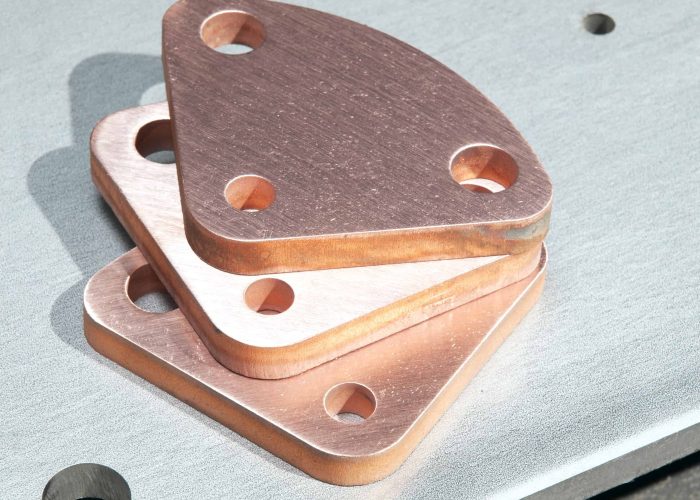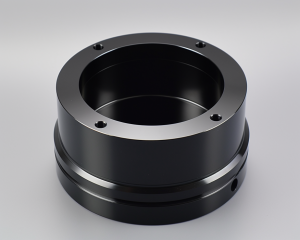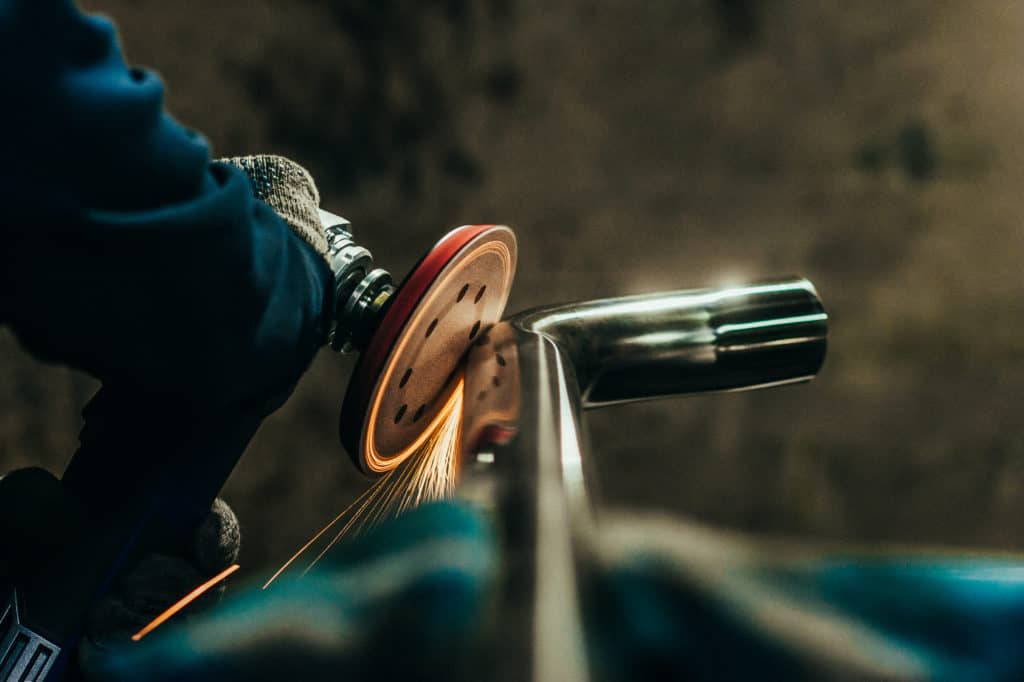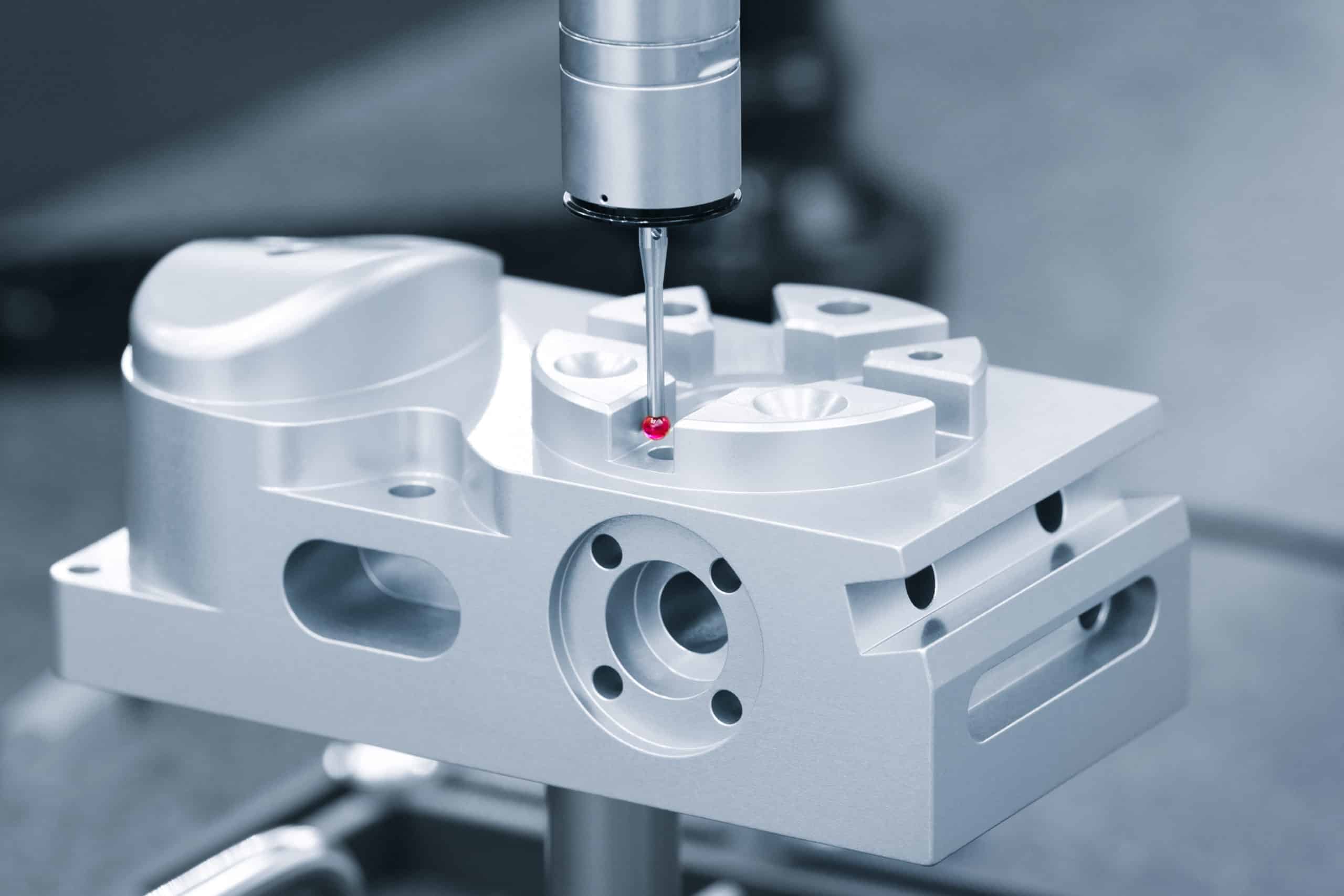Choosing the right brass alloy for CNC machining requires balancing performance, cost, and manufacturability. With extensive experience machining brass components for automotive, electronics, and precision instrument applications, small alloy differences can dramatically impact both part quality and project costs.
C360 brass (free-cutting) is the most common choice for CNC machining due to its excellent machinability and cost-effectiveness, while C260 and C464 offer better mechanical properties for demanding applications. Alloy selection depends on your specific requirements for strength, corrosion resistance, and surface finish, with C360 providing 2-3x faster cutting speeds than steel.
Find out when PTFE is essential, how its softness impacts design, and when cheaper engineering plastics can meet specs without sacrificing quality.
Table of Contents
Which Brass Alloy Should I Choose for My Application?
C360 brass (free-cutting) is the optimal choice for most CNC applications requiring high machinability and cost efficiency, while C260 and C464 should be selected when superior mechanical properties or corrosion resistance are critical. C360 works well for most indoor applications where cost and precision matter most.
We’ve machined thousands of brass components for audio equipment faceplates and electronic enclosures, consistently achieving the tight tolerances these industries demand. C360 stands out because it machines cleanly without the work hardening issues that plague other copper alloys, making it ideal for complex geometries like recessed panels or intricate mounting features. When clients need decorative brass parts with mirror-like finishes, C360 responds beautifully to polishing and plating processes.
However, automotive clients often require C260 cartridge brass for components like fuel system fittings or transmission housings where higher tensile strength prevents cracking under pressure. The material costs more and machines slightly slower, but the performance difference becomes critical in high-stress applications. For marine electronics manufacturers, C464 naval brass justifies its premium price through superior corrosion resistance—we’ve seen C360 parts fail within months in saltwater environments where C464 components last years.
Industry specifications like ASTM B16 help guide alloy selection, particularly for regulated applications where material traceability matters. Most general-purpose applications fall well within C360’s capabilities, making the upgrade to specialty alloys unnecessary unless specific environmental or mechanical demands require their enhanced properties.
Design Takeaway: C360 delivers excellent results for most applications at the best value, while C260 and C464 should be reserved for applications where their specific performance advantages justify the additional cost.
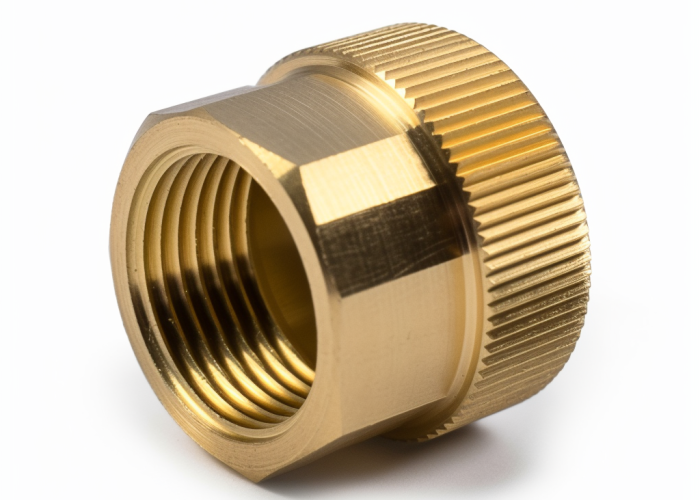
What Mechanical Properties Can I Expect from Different Brass Alloys?
C360 provides adequate strength for most precision components, while C260 delivers significantly higher strength for demanding applications and C464 offers moderate strength with exceptional corrosion resistance. Understanding these performance differences helps you avoid over-specifying materials that increase costs without improving functionality.
Through years of machining valve bodies and precision components, we’ve learned how each alloy’s properties translate to real-world performance. The material choice directly impacts dimensional stability and long-term durability in demanding applications.
Alloy Tensile Strength Hardness Typical Tolerance Best Applications ASTM Standard
C360 (Free-Cutting) 45,000 PSI 65 HRB ±0.01 mm Electronic housings, fittings, decorative parts ASTM B16
C260 (Cartridge Brass) 60,000 PSI 75 HRB ±0.015 mm Automotive components, pressure vessels, gears ASTM B36
C464 (Naval Brass) 50,000 PSI 70 HRB ±0.01 mm Marine hardware, outdoor equipment, chemical processing ASTM B171
Automotive transmission components taught us where material limits become critical. The constant vibration and pressure cycling quickly expose C360’s strength limitations, making C260’s enhanced properties essential for preventing premature failure. For marine applications, C464’s tin content provides the corrosion resistance that other alloys cannot match in saltwater environments, verified through three-year coastal exposure testing.
Design Takeaway: Match material strength to actual operating stresses rather than defaulting to maximum available properties—each alloy excels in specific applications where its unique combination of properties justifies the material choice.
When Should I Choose Brass Over Other Materials?
Choose brass when your application needs strong electrical conductivity, corrosion resistance, and visual appeal—especially in electronic terminals, marine fittings, or decorative hardware where steel or aluminum fall short in combined performance.
Audio equipment manufacturers consistently specify brass for high-end chassis because of its superior electrical performance and natural electromagnetic shielding. We’ve verified how brass creates measurably cleaner signal transmission compared to alternatives, justifying the material premium for performance-critical applications.
Material Electrical Conductivity Density Corrosion Resistance Machinability Relative Cost
C360 Brass 28% of copper 8.5 g/cm³ Excellent Excellent Medium
6061 Aluminum 43% of copper 2.7 g/cm³ Good Very Good Low
304 Stainless 2.3% of copper 8.0 g/cm³ Excellent Fair Medium-High
Weight considerations often favor aluminum, but brass’s higher density becomes advantageous in precision instruments where mass provides vibration dampening. Measurement device housings benefit from the additional weight that creates mechanical stability impossible to achieve with lightweight alternatives.
Aesthetic requirements frequently override cost considerations in architectural applications. Brass develops its characteristic patina through natural oxidation that creates the warm, aged appearance designers specifically request, improving over time while maintaining structural properties.
Design Takeaway: Select brass when electrical performance, corrosion resistance, or premium aesthetics directly impact your product’s market positioning—choose alternatives only when weight reduction or cost savings take clear priority over brass’s unique advantages.
How Do Brass Alloy Choices Affect My Project Costs?
Brass alloy choice affects project costs through both material price and machinability. C360 is 20–30% cheaper and easier to machine than C260 or C464, reducing total costs by up to 35% depending on part complexity and volume.
From our experience quoting brass components across different industries, the true cost impact extends far beyond raw material pricing. Setup complexity, cycle times, and secondary operations create cumulative effects that often surprise clients during initial budgeting discussions.
Cost Factor C360 (Free-Cutting) C260 (Cartridge) C464 (Naval)
Material Cost (relative) Base +25–30% +40–50%
Machining Speed 400–600 SFM 300–450 SFM 250–400 SFM
Tool Life Excellent Good Fair
Secondary Operations Minimal setup Standard Extended setup
Volume Break-Even 50+ pieces 100+ pieces 250+ pieces
Volume considerations dramatically impact alloy economics. Prototype quantities under 25 pieces show minimal cost differences since setup and programming dominate expenses. However, production runs reveal significant advantages for C360 through faster machining speeds, reduced tool wear, and cleaner cutting that minimizes deburring requirements.
Lead time implications often drive material selection as much as cost factors. Projects requiring quick turnaround favor C360’s superior machinability, while applications with flexible schedules can absorb the additional processing time that specialty alloys require. Rush orders particularly benefit from C360’s predictable machining behavior and reduced risk of production delays.
Design Takeaway: Evaluate total project cost including machining time and secondary operations, not just material pricing—C360’s processing advantages often justify its selection even when raw material costs seem higher than alternatives.
What Tolerances and Surface Finishes Should I Specify for Brass Parts?
Specify ±0.025 mm for general brass part features and ±0.005 mm for critical dimensions requiring precise fit. Match surface finish (e.g., Ra 1.6–3.2 μm) to functional or visual needs—overly tight tolerances or finishes raise costs without added benefit.
We regularly review drawings where clients specify ±0.005 mm on every dimension when only critical mating surfaces actually need that precision, unnecessarily inflating project costs. Most applications achieve excellent results with general tolerances of ±0.025 mm for overall dimensions and clearance areas.
Specification Type Tolerance Range Surface Finish (Ra) Verification Method
General Features ±0.025 mm 1.6–3.2 μm Caliper measurement
Functional Features ±0.005 mm 0.8–1.6 μm CMM inspection
Critical Dimensions ±0.0025 mm 0.4–0.8 μm Laser interferometry
Decorative Finish ±0.01 mm 0.2–0.4 μm Surface profilometer
Electronic housing manufacturers find that Ra 1.6 μm as-machined finishes suit most mechanical applications perfectly, while decorative components benefit from Ra 0.8 μm achieved through optimized cutting parameters. Post-processing operations like polishing can reach Ra 0.2 μm mirror finishes when premium appearance justifies the additional cost, following ISO 2768-m guidelines or ASTM B16 specifications.
Design Takeaway: Specify the loosest tolerances and surface finishes that meet your functional requirements—brass delivers excellent precision when needed, but thoughtful specification reduces costs while maintaining quality.
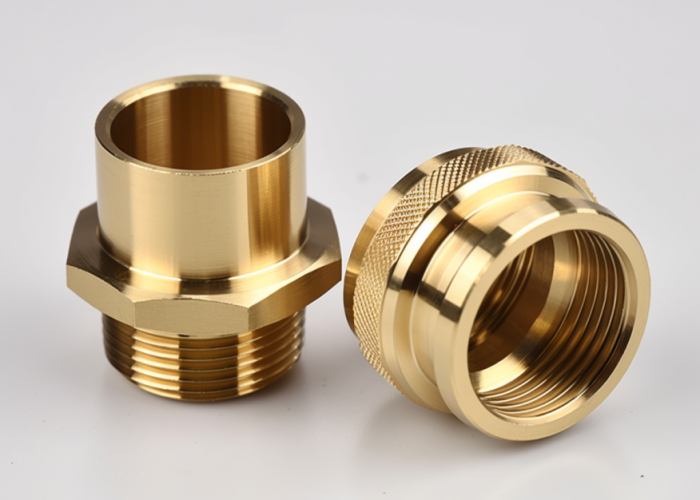
What Design Features Should I Avoid with Brass?
Avoid thin walls under 0.5 mm, deep narrow pockets, and sharp internal corners when designing brass parts—these features increase risk of deflection, tool chatter, and stress failure due to brass’s softness.
Through machining brass components for precision instruments, we’ve learned that thin-wall sections working well in aluminum often deflect uncontrollably during brass operations, making ±0.01 mm tolerances impossible to achieve. Maintaining minimum wall thickness above 1.0 mm provides the structural rigidity needed for consistent dimensional control.
Deep pocket geometries create complications when aspect ratios exceed 3:1 depth-to-width. Brass’s work hardening tendency combines with restricted tool access to create chatter patterns that compromise surface finish quality, requiring design modifications per ASTM B16 manufacturing guidelines.
Sharp internal corners concentrate stress and complicate tool paths. Unlike harder alloys, brass flows slightly under cutting forces, making consistent sharp corners difficult to achieve within ISO 2768-m standards. More critically, stress concentrations at sharp transitions initiate fatigue cracks in cyclic loading applications, particularly problematic in automotive components.
Design Takeaway: Work with brass’s natural flow characteristics by incorporating generous transition radii and avoiding geometric features that fight against the material’s inherent properties—this approach improves both manufacturing success and long-term reliability.
How Should I Design Parts to Optimize Brass Machining?
Design brass parts with R0.8+ fillets, even material distribution, and easy tool access to reduce machining time by 25–40% and ensure consistent surface quality.
This format is concise and optimized for featured snippets. Let me know if you’d like an expanded version or paired bullet summary.
Electronic enclosure designs with R1.0 mm minimum fillets consistently achieve Ra 0.8 μm surface finishes at standard cutting speeds, while sharp-cornered alternatives require slower feeds and multiple finishing passes verified through surface profilometer measurement.
Tool accessibility optimization impacts project economics through setup consolidation. Components designed for 3-axis machining from two orientations typically cost 30% less than parts requiring multiple complex setups. We’ve redesigned aerospace brackets where splitting complex parts into simpler components reduced manufacturing cost while improving assembly tolerances.
Material distribution should account for brass’s thermal behavior during cutting. Uniform cross-sections prevent differential expansion causing dimensional drift, while gradual thickness transitions minimize work hardening effects that degrade tool life. Strategic pocket design following GD&T principles maintains structural integrity when weight reduction becomes critical.
Hardware integration optimizes assembly processes. Standard fastener accommodations with appropriate edge distances per ASTM B16 specifications prevent thread pull-out, while counterbore depths matched to common socket head cap screws eliminate custom hardware requirements.
Design Takeaway: Optimize brass geometry through accessible tool paths, uniform material distribution, and generous transition radii—these choices reduce manufacturing cost while ensuring reliable performance in demanding applications.
Conclusion
Brass alloy selection balances performance requirements with manufacturing economics—C360 delivers excellent results for most applications at optimal cost. Choose specialty alloys only when specific environmental or mechanical demands justify the premium. Contact us to explore brass machining solutions tailored to your precision component requirements.
Frequently Asked Questions
C464 naval brass provides excellent corrosion resistance for marine environments and outdoor applications. Standard C360 shows discoloration and corrosion in saltwater or harsh weather, making C464 essential for long-term outdoor performance.
C360 brass works excellently for most electronic housings due to its superior electrical conductivity and electromagnetic shielding properties. It machines cleanly for complex geometries while providing the RF protection that aluminum cannot match in sensitive applications.
C360 offers the most economical option, while C260 costs 25-30% more and C464 runs 40-50% higher in material costs. However, C360’s faster machining often offsets material price differences, especially in production quantities above 50 pieces.
C260 cartridge brass handles high-stress automotive applications like transmission components and fuel system fittings with its 60,000 PSI tensile strength. C360 works for lower-stress parts, but C260 prevents failures under constant vibration and pressure cycling.
Brass consistently achieves ±0.005 mm tolerances on critical features, making it suitable for precision assemblies. Standard features can use ±0.025 mm tolerances to control costs while maintaining excellent fit and function.
Yes, maintaining 1.0 mm minimum wall thickness and adding R0.8 mm fillets improves both manufacturability and part durability. These changes reduce manufacturing costs while preventing stress concentrations that cause field failures.
